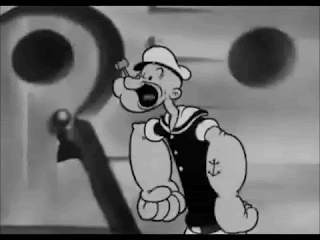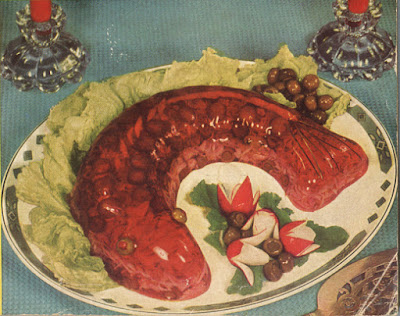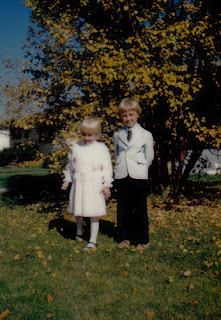This is a serialized version of my novel Bus People, a story of the people who live on Vancouver’s Downtown Eastside. The main character, Dr. Zoltan Levy, is loosely based on author and lecturer Dr. Gabor Mate. It's a fantasy and not a sociological treatise: meaning, I don’t try to deal with “issues” so much as people who feel like they’ve been swept to the edge of the sidewalk and are socially invisible/terminally powerless. I’m running it in parts, in chronological order so it’s all there, breaking it up with a few pictures because personally, I hate big blocks of text.
Bus People: a novel of the Downtown Eastside
Part Two
"No one is as capable of gratitude as one who has emerged from the kingdom of night." Elie Wiesel
Aggie
Portman Hotel, Vancouver, B. C.
Cylinders. The backpack was full of
cylinders. It was not full of
junk. Not not not. And they’re not just any old cylinders,
they’re Edison Blue Amberols, the best kind you can get.
I
have to find more Blue Amberols. It’s
just a habit, I can quit any time I want to, just a little quirk of mine,
collecting. I collect all sorts of
stuff, birdcages made out of bamboo, salt-and-pepper shakers shaped like
people, macramé handbags made back in 1973.
My room here is full of stuff,
the social worker doesn’t like it, she complains about it all the time
and keeps telling me to clean it up, get rid of it all. But it’s cool, there’s no rats or anything,
it isn’t dirty, I keep order in the place.
Sometimes stuff falls down, there are loud crashes at night that disturb
the neighbours, particularly Porgy who lives just under me and is a light
sleeper. But at least I know where
everything is.
I didn’t even know what a Blue Amberol was
until I started going to flea markets about a year and a half ago. I saw these ornate-looking canisters with
flowery writing and ornamentation all over them – they were beautiful, and I
just had to buy one of them, not even knowing what was inside. It was only a buck and a half, what the hell,
I’ll go without lunch tomorrow. Maybe
it’s snuff or something, I thought, something Victorian, or at least Edwardian,
really old and maybe even valuable.
But it wasn’t snuff at all. It was a dusty old cylinder full of
grooves. Took me a minute to figure it
out, that this was something like a record, or what came before records, the
first medium for recorded sound. I felt
like I had seen one before, that I remembered it from somewhere. I had Porgy go on the internet and do a
search. I don’t have a computer, I don’t
know how Porgy can afford one, but he does and is obsessed with it.
Anyway, he tells me that this isn’t just
any sort of flea market hunk of junk but
a Blue Amberol, a particularly deluxe (back then) kind of cylinder recording
popular in the early 20th century.
They weren’t the earliest recordings – those were made out of brown wax,
with a few really early, rare ones made out of yellow paraffin, but even before
that, they used tin foil. No kidding – tin
foil on a rotating cylinder, scratched with a needle that picked up
vibrations. The basic principles of
sound recording. Think of Thomas Edison
at Menlo Park
When I was little, old records used to
scare me. I used to think. . . never
mind what I used to think. I had a hell
of an imagination. It got me in trouble all the time, at school, but even worse
at home. My mother used to say that I
made up stories, but to me, it was all completely real. I thought the voices on those old 78 r. p. m.
records had some sort of spooky power.
Like it was a kind of time capsule or something. The singing ones were weird enough, they all
had that muffled quality like the sound was coming out of a tiny little
closet, but the spoken word ones, they
really freaked me out. Used to make me
run out of the room, but my Dad, he’d make me listen to them, listen to Caruso
sounding like he was singing inside a cardboard box, or Dame Nellie Melba
warbling away, or something called the Wibbly-Wobbly Walk – God, the Wibbly-Wobbly
Walk scared the living shit out of me.
Couldn’t stand it, but my Dad made me stay and listen.
It was his collection and he was convinced
it was worth thousands, but now that I know something about early recordings, I
can see that what he had was virtually worthless. Too many scratches, ticks and
pops.
Dr. Levy, the one they call “Zee”? He’s
helping me deal with memories. He’s
good. I mean, he’s good if you’re in
pain or trouble, if you’re not, then forget about it, he can be a real hardass,
it’s surprising how cold he can be. But
I’ve seen him deal with guys so far gone from AIDS, the shit was pouring out of
them like lava, and he never bats an eyelash, just rolls up his sleeves and
cleans up the crap like it was nothing.
I like Dr. Levy.
But this guy on the bus today, this
Szabó. I know that’s his name, because
people talk about him. He has regular
habits, I’ll say that about him. I don’t
know where he goes exactly, somewhere around the Sunshine Hotel area, the real
asshole of Vancouver
Mine’s Blue Amberols. I’m glad this Szabó can’t look at me, because I just hate it when people stare at
my backpack, poke at it or ask what’s inside it. I had fourteen Blue Amberols crammed in there
today, and never mind that I haven’t
been able to afford a player yet, it’s only a matter of time.
I
guess listening to these things is going to scare the living shit out of
me. I take five hundred milligrams of
Seroquel every day, Dr. Zee is trying to wean me off it, he says I might have
been misdiagnosed, but I’m not so sure about that, I guess you could say I
scare easily, I was born minus a few
layers of skin. But this Szabó, he has
no face, or that’s what they say about him anyway, even though he sings. I’ve heard it, we all have. He sings without words, of course: “nggg, nggg, nggg” – it’s creepy, but
you know something, he has a good voice, and a Hungarian accent, even with no
words. I wish he’d go see Dr. Zee, he’d
be able to help him. That guy could’ve
helped Hitler get over his anger problem.
Maybe he could write things down on a piece of paper or a chalkboard, I
don’t know. Better than begging, which
is what Szabó does for a living now that he can’t see to paint. It’s sad.
I draw a disability cheque, it’s not much but it keeps me going, along
with whatever stuff I can make or sell or trade, even though I’m not allowed to
see my kids which sometimes makes me want to slit my fucking throat, just end
this, end it now. But Dr. Levy
says don’t, Dr. Levy says don’t think that way, he says I’m valuable, he says
there’s only one of me in all the world, that human beings are irreplaceable,
so I guess I better trust his judgement which might be just a little bit
clearer than mine.
Anyway, Szabó gets on the bus this
morning, it’s one of those stinky wet mornings when everything’s dripping, and
he sits right down beside me like he’s done so many times before. Like I say, regular habits. And Szabó is clean, not like a lot of the
people who take the bus every day; he doesn’t ever smell, he looks after
himself. I don’t know how he does it, but he does. Pride. He must have hair still, I mean, the back of
his head must still be OK, just his face is missing, no big deal, nothing serious, eh? But then a guy across from us on the sideways
seats says, “Hey, fucking freak, you on a pass from the sideshow? Gettin’ it on
with the Schizo Lady?” Street people
have got radar, that’s how they can tell.
“I beg your pardon, buddy, if you wanna
see a freak, I think you should maybe try looking in the mirror.” I’m usually not this bold, but poor Szabó
can’t speak up. Can’t defend himself,
but he can hear everything. It’s
cruel. This guy across from us, he looks
like a bad bowel movement after too many blueberries, long and snaky and
tattooed dark indigo all over every square inch of his skin. He’s a living shit. And he’s calling us freaks. Jesus.
I keep trying to tell Dr. Levy what it’s like, but he just shakes
his head. Says people call him a Kike or
a Yid or a Heeb sometimes, but it’s not the same, it’s not. “Hey! Auschwitz !” one of them said to him once – and, yeah, he is pretty
thin, looks kind of undernourished. How does that go? “He hath a lean and hungry look.”
So the driver, his name’s Bert Moffatt, I
know him ‘cause I’ve seen him lots of times before on the Number 42, he says to
me, “Lady, would you kindly can the comments, you’re being abusive here.” I’m being abusive. If a schizo lady raises her voice even a
little bit, she’s being abusive, she’s out of control, while this big
blue-tattoo shithead over here, he can hurl insults at anybody he likes. Why? I don’t know, I guess he’s supposed to
be sane. Probably a pimp, probably a
heroin addict or a child molester or sells his grandmother for a hit of crack,
but he’s allowed to say whatever he likes.
Fuck it, I’m going back to the flea market
tomorrow and buy that cylinder player I saw, it was priced at $75.00 which for
me is a bloody fortune, and it looked busted, the ones that work cost way more
than that and are out of my price range, but you can usually bargain with these
guys, and I have $50.00 scraped together already, it took me months and months
of going without smokes, and then I found a ring in the washroom at the
Tinseltown Theatre, pawned it and got nearly 30 bucks for it which goes to
prove that there is such a thing as Providence
Zeddyville
They call it Needle Park Pigeon Park
It’s a loitering sort of place, an unplace. A dislocation. Calling it a park is an
impossible stretch, for no green thing could grow here. Dr. Zoltán Levy barely notices it any more.
He has a very fast walk, but it’s not so he can get away from the horrors of
the neighborhood. It’s so he can zip
from the Portman to the Sunshine to the Waverley Hotel to get to his patients,
the people who are usually on their last gasp.
Dr. Zee doesn’t step on the bus very
often, but it disgorges passengers right outside his home base, the Portman, an
armoured truck of a place, fortified, barred, battened down like the good
doctor’s own bleak, unsmiling face. He
makes himself available to people, people like Aggie Westerman the chronic
schizophrenic, and Porgy Graham who has a strange obsession with his bowels, and Dave the
mutilator who has his lips multiply pierced and chained together, so he can’t
even eat without pulling all the studs out.
Things happened to Dr. Zee a long time
ago, everybody knows that, or at least they suspect it, though no one has any
specifics, and he isn’t talking. He
“doesn’t have time for a relationship”.
That’s what he says when he is interviewed, which happens quite a lot
now, because slowly but surely, Dr. Zee is
starting to become famous. At
least, Vancouver
People ask him, often, if the work is
depressing. What depresses him is the
question: the implication that he is
dealing with the dregs of humanity, and not a whole lot of bruised little kids
in adult bodies, people who were fucked by their fathers or whipped senseless
by their mothers or told they were useless piles of shit so often they began to
believe it, or told that they never should have been born at all. It does a bit of damage when you hear it
often enough; it can warp a life into a howling parody, heroin squirting up
through the veins to blot out the self-loathing for just a little while, a
protected, peaceful while, until it’s time to start hustling again. The abyss
of the heroin state is welcome, oblivion being far more bearable than whatever
is in second place.
Tourists come to Zeddyville because the
area is a little bit famous, too, kind of like Dr. Zee himself, and even the
Governor-General came once, on a walkabout like the Queen Mother, her face in a
carefully-composed mask of what she hoped was concern. It doesn’t smell too good down here, it
smells like rancid piss at the best of times, human vomit, pot fumes and other
things you can’t identify. It’s a raw wound, the walls of the buildings
splattered in gory-colored murals and gang graffiti impossible to decipher, the
strange hieroglyphics of the street. You
have to keep your cool in Zeddyville, not show any fear. It helps not to make eye contact, as you’ll
stare into an abyss, a vacuum, an absence in the eyes of every stranger that
passes by.
“Spare change? Spare change?
Have a nice day. Spare
change? Spare change? Have a nice day.” It’s a sort of mantra for a lot of people, a
way to make it through to the next day of spare change, spare change, have a
nice day. Of course some of the
people here are crazy. There used to be
a place called Valleyview, but they closed it down except for the really
hard-core cases, and shouldn’t these people be integrated into the community
anyway and not just institutionalized and kept out of the mainstream, hidden
away like they’re frightening or shameful?
Now the dirty little secret of mental illness is an open secret, like
Szabó’s face when it was shot off and blown to bits all over the blackened
walls of his torched studio. The walking
wounded don’t have their intestines hanging out all over the outside of their abdomen, like in a war, but
they do have spilled psyches, their pain hanging out, their loneliness hanging
out, and it bothers people, the normies, the civilians. Their faces broadcast
what they feel: for God’s sake get
away from me buddy before I see myself again, before I see what’s really wrong
with me and why I cannot find a place in this world, before I see that this is
where I really belong.
For no matter how good I look on the
outside, I am part of this whole deal that creates a Zeddyville in the middle
of a glittering, prosperous, showcase city on the coast of the best country in
the world, then forces people to live in it when living is just a simple, bare
act of endurance.
We shove them here, we forklift,
steamroll, corral, push, shove, cram, then clang the gate shut behind them and
then say, what’s wrong with these people, why can’t they get it together,
why can’t they make something of themselves?
Get a job!
Leave me alone!
NO, I don’t have any spare change, and put
that squeegee away because I am not interested in the fact that you haven’t had
anything to eat for four days! Jesus,
these people.
Dr. Zee sees, hears, senses it all the
time, a palpable sense of dismissal and fear echoes all around him, the long
antennae sticking out of his head pick it all up, whether he wants to hear it or not, but he
keeps on walking fast with his stethoscope going bounce, bounce, bounce on his
chest. He doesn’t really have one around
his neck, it just appears that way, it’s his sense of purpose, so intense and
focused, it’s almost a buzz. He doesn’t
carry a black bag either, but he will go where the trouble is, he will go where
the pain is, and down here, there is more than enough to go around.
Bus People Part One
Bus People Part Two
Bus People Part Three
Bus People Part Four
Bus People Part Five
Bus People Part Six
Bus People Part Seven
Bus People Part Eight
Bus People Part Nine
Bus People Part Ten
Bus People Part Eleven
Bus People Part Twelve
Bus People Part One
Bus People Part Two
Bus People Part Three
Bus People Part Four
Bus People Part Five
Bus People Part Six
Bus People Part Seven
Bus People Part Eight
Bus People Part Nine
Bus People Part Ten
Bus People Part Eleven
Bus People Part Twelve


































